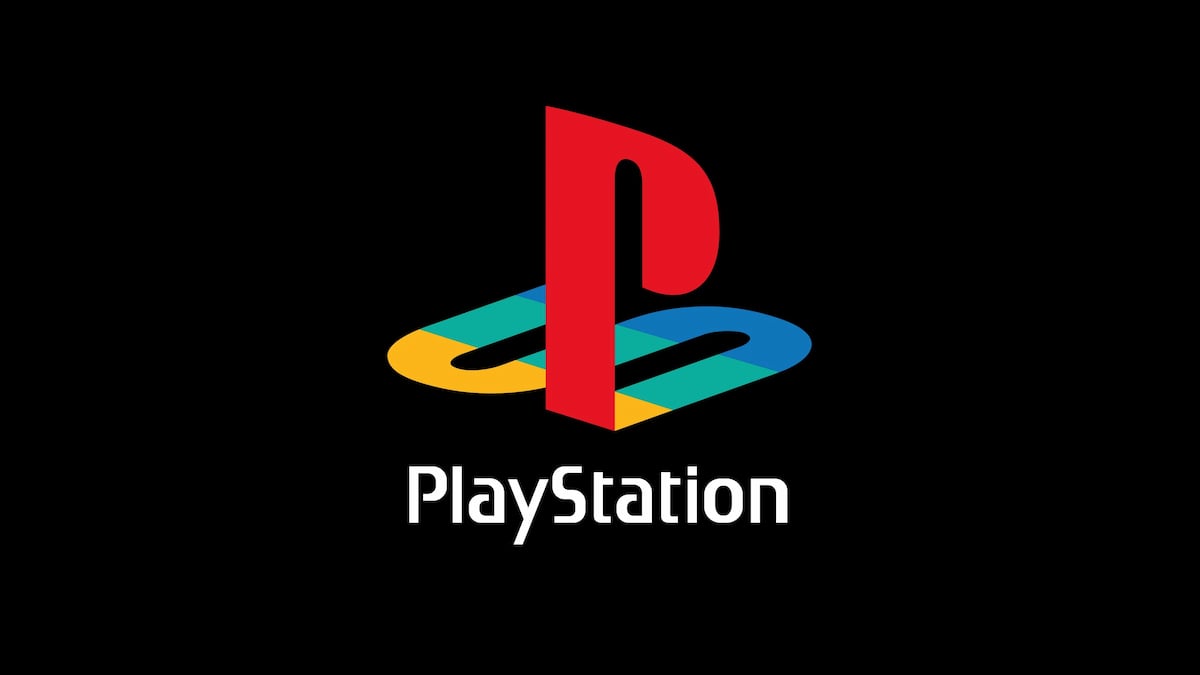In early 2013, a 32-year-old Brit named Rory Dickenson moved to Berlin to work a pair of short-term freelance jobs. But he hadn’t been there long when he found an opportunity he couldn’t ignore.
A human resources service put Dickenson in touch with a company calling itself the Esports Global Network. Dickenson was pretty familiar with the growing competitive gaming, or esports, industry, and he could easily guess what this new online video network might be about.
He knew about The International, a tournament for the game Dota 2 that the previous year had boasted a prize pool of $1.6 million. And he knew of the success that competitive gaming had seen in some countries, like Korea, where pro gamers were treated the way professional athletes are in other parts of the world. The idea of getting into such an ambitious esports group on the ground floor was very appealing.
On October 2013, he went to the group’s offices for an interview. It went very well. Two months later, Dickenson finally got the call: ESGN wanted him to help produce a promotional shoot for the company’s new esports-themed online network.
From the outside, ESGN appeared to have everything going for it. People within the company spoke about assembling a truly professional broadcast, one that would stand up to the very best traditional sports media had to offer. And it gave every indication its backers were deep-pocketed, too. In December, the company threw a gaudy launch party in the Waldorf Astoria hotel in Berlin, estimated to cost around $50,000.
Little did Dickenson know that within months, ESGN’s ambitious launch would come to a screeching halt, and employees like him would be left trying to pick up the pieces—collateral damage from yet another failed esports company.
…
In Korea, StarCraft is more than just a game with a rabid fanbase. It’s a sport of national significance. The biggest teams are supported by legions of fans who show up to venues decked out in the colors of their favorite side. They play in packed TV studios, indoor arenas, even the occasional outdoor stadium.
The most popular players are celebrities, established names in local pop culture—-names like Lim “Boxer” Yo Hwan and Hong “Yellow” Jin Ho. There are even two national television channels that broadcast StarCraft matches.
This is what ESGN aspired to.
Run by Clauf Media, a production company backed by the Berlin-based investment group Sapinda, ESGN planned to hold competitions for popular games like League of Legends, Hearthstone, and Street Fighter 4, which it would broadcast to the world with top-notch production values. It would bring in the best players and commenters. It would mainstream esports in the West the same way stations like OnGameNet and MBC Game did in Korea.
ESGN’s first promotional shoot in early December went well. The team shot a series of slick commercials with popular StarCraft commenter Dan “Frodan” Chou. The first, which began with helicopter shots over a pair of Berlin skyscrapers, eventually racked up nearly 100,000 views on YouTube. Working on those sets, Dickenson immediately noticed something different about both the production and the organization backing it.
“My first impression was, ‘Holy shit these guys are really spending the cash’,” Dickenson said.
Company executives drove luxury cars and were treated lavishly in Berlin, hardly a cheap city; it rented out a huge studio and spared no expense outfitting the space with what Chou would later call “all kinds of incredible things” including “augmented reality.” Dickenson had seen enough people come and go in the esports scene to know that a willingness to spend extravagantly could be more a reason for alarm than a sign of solid financial backing. But when he was offered a contract as an assistant producer in January, he assumed that it would guarantee at least a year’s worth of work.
“I figured that any company that sets up like that does it with a minimum of one year of funding,” Dickenson said. “If everything goes completely wrong and at that point the financiers decide to pull out then so be it, but at least we would have a year.”
Dickenson was one of many full-timers brought on around that time. ESGN signed a number of the people who helped on the original commercial shoot to similar contracts. Some had moved to Germany from other locations around Europe to take the job. Unlike Dickenson, however, a large chunk of the media hires had no experience with esports whatsoever; Chou estimated that 80 percent were completely new to esports and “first heard about the industry in their interviews.”
 Dickenson’s contract wouldn’t actually kick in until February. Still, up to then he’d been paid fairly, and on time.
Dickenson’s contract wouldn’t actually kick in until February. Still, up to then he’d been paid fairly, and on time.
ESGN’s long-term plan originally had the company debuting its first broadcast in April 2014. But in December, something changed. Executives suddenly and unilaterally decided the schedule should accelerate dramatically, and ESGN’s first broadcast now needed to be produced just after the turn of the new year, on Jan. 6.
This turnabout created chaos for the team. In less than a month, staff members needed to create a brand new set out of an empty studio, fully book teams and players to participate in their first series of competitions, and be prepared for all of the necessary post-production work that would follow.
Dickenson estimates that his production team worked hundreds of hours of overtime in the month of December alone trying to meet the newly established goals. Another person who worked for the company during this time told The Daily Dot that 12-hour work days were sometimes expected of the crew, who would go as many as 18 days without a single day off.
“The producers warned that in order to match the schedule, costs would skyrocket in order to accommodate the announcement,” Chou said in the interview with TeamLiquid. “They okayed it under the assumption that money would not be an issue.”
Over time, these conditions took their toll on the team. Crew members got sick, some as frequently as every few days—even as they worked extreme hours to try and meet the demands of the newly modified schedule.
Meanwhile, management at ESGN were nowhere to be seen. The executive department had been set up within the core of Berlin where executives could enjoy the fruits of the metropolitan area. But this was some 30 kilometers away from the production studio.
ESGN’s early productions often ran under the “Fight Night” banner and would feature popular players squaring off against one another for cash prizes. Live viewership numbers were favorable, with more than 40,000 viewers tuning in to watch some Hearthstone matches. Another early Hearthstone bout drew over half a million views when uploaded to YouTube.
While ESGN did manage to successfully run and produce its first tournament events within the newly established timeframe, dissatisfied rumblings soon came from the executive office over the viewership figures. While the peaks were high, they also proved unsustainable. From January to February, the average number of live viewers dipped from around 10,000 to closer to 5,000.
February was also the first month members of the production team would not be paid on time.
To make matters worse, contacting the executive office proved difficult for the now-unpaid staffers. Former staffers, including Dickenson, indicated that the crew’s suggestions always fell on deaf ears.
The only reliable way to deliver a message was through senior producer Morgan Stone, who would carry the collected concerns of the production team into private meetings with the executives.
“We put a lot of trust into him and you never really know how much someone is just going to protect their own interests,” Dickenson said.
Still, the production team was willing to trust Stone. He had relocated to Berlin for his job with ESGN and had gone unpaid just like the rest of them, giving him plenty of reason to make their case to company executives.
Late payouts were eventually given for the month of February, but the problems had by no means been resolved—in March, they started all over again.
This would lead to the involvement of the one and only direct point of contact between the executive branch and production team: chief executive Jong Hwan Lee.
Jong, a Korean national, traveled to the production studio along with an interpreter to discuss the situation with his distraught crew. The team’s hopes for a reasonable explanation quickly extinguished upon Jong’s arrival.
“It was a stormy day outside and the first thing he said was that the weather outside reflected how he felt in his heart,” Dickenson recounted.
Jong further emphasized the executive office’s displeasure with the shrinking number of viewers. As for why members of the crew had again not been paid on time, Jong claimed that there were issues in collecting promised money from some of the company’s investors. In spite of these issues, Jong promised that everyone would be paid in good time.
That round of payments did eventually come. But it would be followed by yet another missed payday in April. That brought Jong Hwan Lee once again.
Jong’s message changed during his second visit. Viewership figures were no longer the main issue. Instead, Jong specifically pointed to investors from Sapinda, the company providing much of the financial backing for ESGN. These investors were moving their funds from Hong Kong to Luxembourg, Jong said. He claimed that setting up finances in Luxembourg had taken longer than expected, resulting in the freezing of money that would otherwise have been used to pay ESGN employees.
Nevertheless, Jong implored the crew to continue their work, assuring them that they would be paid.
One former employee told us that Jong specifically asked the person reject a job offer elsewhere. Stay with ESGN, he said. The future is bright.
Two weeks later, the employee’s paychecks suddenly stopped.
“They kept dangling the carrot, ‘It will be here soon, just keep doing your work and it will come around back to you’,” Dickenson said.
At this point, some members of the ESGN crew began to question why the company funding the operation needed to move these funds to begin with. Research into the leadership at Sapinda brought to light charges that had been filed in 2009 against co-founder Lars Windhorst covering fraud, embezzlement, and bankruptcy offenses. But there wasn’t much for the team to do with this information besides make accusations, and making such accusations wasn’t going to help anyone get paid.
While staff members continued to wait for payment, ESGN executives set about ordering the production of further broadcasts. Particularly stressful for the crew was the April order of a League of Legends broadcast that was to be assembled and produced from scratch within a 10-day time frame.
Executives put out the required funds to book and produce the show, but still acted as if they were unable to pay members of the production crew for their hours worked.
At this point, Dickenson decided he would direct one more broadcast and then refuse to work until he was paid.
“I didn’t think it would get results. But I got to the point where I was so pissed off about things after having put so much time and energy into it that I was just beaten and exhausted,” Dickenson explained.
“The good nature of the people on our crew was really being taken advantage of.”
After the filming of the League of Legends tournament, the executive office and the production studio were combined, bringing the executives directly into the studio. They immediately began to make changes.
This included a complete restructuring of ESGN’s productions. Rather than producing original content, company executives wanted ESGN staffers to redub existing streams of other competitions into different languages under the ESGN brand.
This new plan made much of the existing crew redundant.
Ten crew members, in positions ranging from producers to production assistants, were fired on the spot.
“That was the day I decided I wasn’t going back in until they paid me,” Dickenson said.
Dickenson returned to work only to relay to his bosses that he disagreed with the company’s new direction and that he would be taking his holidays immediately. Two days later, he was informed via email that his contract had been terminated.
Throughout the process of culling the production crew, not a single executive was let go.
“They were very cruel in the way they went about firing people who had worked there from day one,” Dickenson said. “They scapegoated the studio team who had delivered everything they had ever asked for.”
As difficult as the situation had become, Dickenson was confident that he would eventually be paid for the time he spent working for ESGN. He and many other members of the crew were still owed thousands of euros each.
In the aftermath, ESGN repeatedly assured former employees that pay was coming. It never did.
In June, ESGN’s backers at Clauf Media declared bankruptcy. That meant that anyone still expecting payment would need to file for insolvency proceedings with the local German court system.
 “This was a really tough time,” Dickenson said. “You’re in a foreign country without much savings and when the money never comes it really screws you over.”
“This was a really tough time,” Dickenson said. “You’re in a foreign country without much savings and when the money never comes it really screws you over.”
The company made no effort to thank former employees or assist in their moving forward, according to Dickenson. Approximate numbers were given for overtime, but Dickenson says that these numbers were inaccurate, failing to account for how much overtime he and other crew members had actually accrued. And of course, those hours have still yet to be paid.
As months have gone by, little has changed for ESGN’s former staff. Some have received minor payouts, but nothing substantial enough to relieve the financial burden. Those that have continued to pursue lost wages have been bogged down in the German insolvency process.
“People are struggling to pay rent and are in danger of being evicted from their apartments,” Dickenson said.
Many former employees are borrowing from friends and family or taking out loans from banks just to get by, according to Dickenson. Others have sought out welfare assistance as they struggle to make ends meet after having relocated to a foreign country. A source who previously worked for ESGN indicated that at least one former employee had even been forced to leave his or her home.
“The one good thing is we’re able to support each other because we’re all going through a similar situation,” Dickenson said.
…
The fallout from ESGN’s downfall has left far more questions than answers. It’s difficult to understand what the company’s long-term plan could have been, especially given the sudden truncation of their production schedule and how quickly it ran into financial difficulties.
What we do know is that ESGN is now part of an established line of failed esports ventures. You can go back an entire decade and find similarly chaotic situations brought about by overly ambitious groups with little experience and a tendency to overspend.
Take 2004’s Cyber X Games, which promised a big enough prize pool to justify travel expenses for dozens of top international players. But when those players showed up to the event, they found a place so lacking in basic hardware and networking capabilities that only two tournament matches would ever be played before the event was cancelled.
Three years later, DirecTV founded the Championship Gaming Series. While CGS had a certain degree of stability, as well as a sound financial backing, it never figured out how to make enough money to justify its rising production costs. It failed, too.
To a certain extent, ESGN reflects the progress esports have made: It was produced on a grander scale and with greater goals in mind than Cyber X Games, and it was better received by the community than CGS. But the end result was the same, with fans feeling burned by yet another group that promised to bring esports to the mythical next level.
In spite of the many difficulties he faced during his time with ESGN, Dickenson insists that his experiences with his colleagues in production and the players and esports personalities he was introduced to were strictly positive. He speaks fondly of working with such names as Mike Ross and Daniel “Artosis” Stemkoski, neither of whom have been paid either.
But the experience was difficult enough that Dickenson can’t see himself working in the growing esports industry again, at least in the near future.
“It was a great bunch of people to work with, and that alone makes me want to continue working in esports,” Dickenson said. “But this experience has been so terrible that I would have to think on it very carefully.”
Some employees continued to work for ESGN into the summer, still holding out hope that things would turn for the better. They weren’t paid.
“I had some big doubts but with this kind of opportunity… I thought it would go for a least a year,” Dickenson said.
“It’s partly my fault for not trusting my intuition, but sometimes you have to make a bold move. We did that. And what happened from there was out of our control.”






Published: Sep 8, 2014 08:30 am